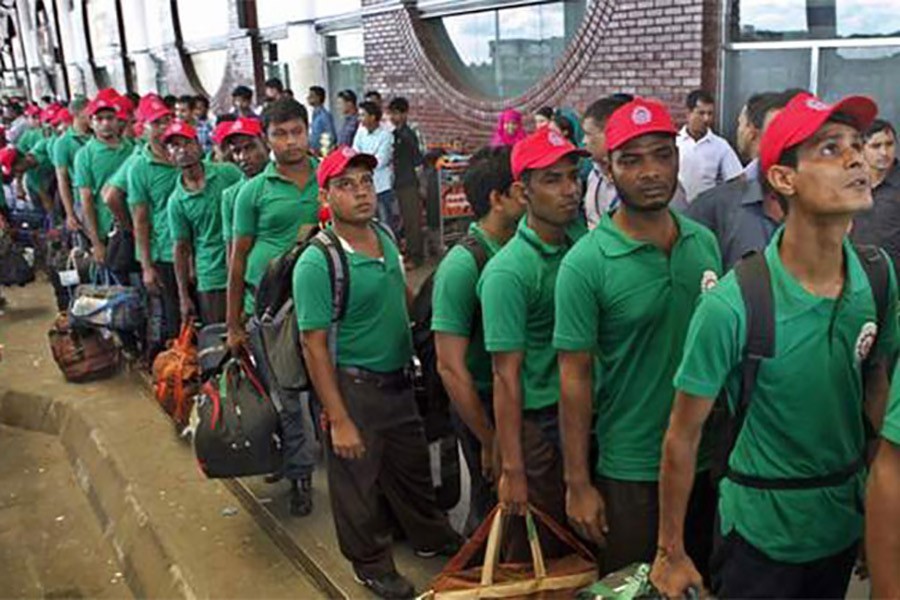That more than 100,000 Bangladeshi workers were deported from different countries in 2019 is a worrying piece of news. The number is equivalent to nearly one-sixth of the workers sent abroad during that year. More than half of the workers deported last year were from Saudi Arabia and the rest from Malaysia. The forcible send-back of these undocumented workers coupled with the return of regular workers at the end of their job contracts might leave a waning effect on an otherwise healthy remittance inflow noticed during the just concluded calendar year.
The authorities in major destinations of Bangladeshi workers have strengthened their drives against undocumented foreign workers in recent years. The Kingdom of Saudi Arabia (KSA), the United Arab Emirates (UAE) and Malaysia -- the countries that are employing the most number of Bangladeshi workers -- have taken a tough stance on undocumented and unwanted foreign workers. The employing countries, obviously, do have their internal compulsions. Unemployment in these countries has been on the rise and the local people, in their increasing numbers, have been taking up a few jobs that, in most cases, used to be filled up by the foreign workers. The Gulf countries in particular are now eager to reduce their dependence on foreign workers, skilled or otherwise.
It is difficult to know the actual number of Bangladeshi expatriate workers. Here, the government data are partial since it does not take into account the number of workers returning home for good, which is a continuous process. Actually, the government does not have any mechanism of knowing the real number of returnee workers. Nor are the authorities aware of the number of Bangladesh nationals working in different countries without valid documents. Similarly, the actual volume of remittance inflow is far greater than what is estimated at the official level as a sizeable amount of money is being sent home using various unofficial channels, popularly known as 'hundi'.
The remittance money means a lot to Bangladesh, particularly at this point of time when exports earnings have dropped. Its inflow recorded a steady rise until 2015 but the same declined sharply in the next couple years. Following the withdrawal of ban on recruitment by Saudi Arabia in 2017, the country's remittance income started picking up again and the trend is still in place notwithstanding the fact the wages of unskilled migrant workers -- most Bangladeshi migrant workers are unskilled -- are generally lower than before.
However, none can be certain about the continuity of the current uptrend in the remittance inflow. Only an increased outflow of workers, preferably skilled ones, might help the country earn more remittance money. It is hard to bank on the Middle East for understandable reasons. The situation in that region has been unstable in recent years and it might remain so for some more time. Still, the government should continue its efforts to resume manpower exports to the UAE and Kuwait through discussions. Since Malaysia has deported a sizeable number of undocumented Bangladesh workers, the latter should try hard to convince that country for employing more of its workers through legal routes.


